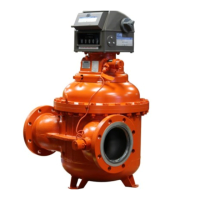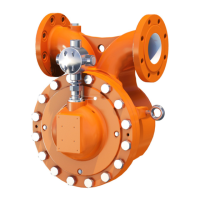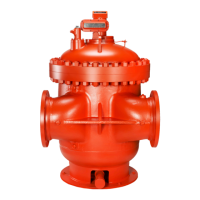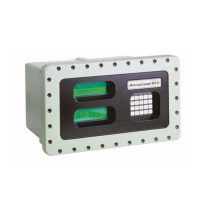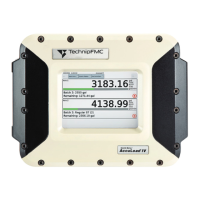MultiLevel Instruction Manual Other Information
13.3. Software Replacement
13.3.1. Main Unit
Prior to each software replacement, the tank truck setup must be recorded
or printed, so that during re-commissioning with the new software all vehicle-
The EPROM (contains software) can be found in the main unit on the main
CPU board (drawing no. 51.351675).
It has a 32-PIN "PLCC" housing (rectangular housing with one beveled cor-
ner) and a sticker showing the software version number (e.g. 1.32). One of the
corners of the base on the printed circuit board is also beveled. A special, com-
mercially available "PLCC removal tool" is required for removing the EPROM
from the base, in order to avoid damaging the EPROM during removal. The two
claws of the removal tool must be inserted into the two recesses of the EPROM
base. The two arms of the removal tool are then pushed together. This causes
the EPROM to be lifted from the base.
Prior to inserting the new EPROM, its connection contacts should be checked
for damage ('bent connection legs'?).
without canting, until it noticeably engages.
The beveled corner of the EPROM must be aligned with the beveled
corner of the base.
After an EPROM on the main CPU board has been replaced, the complete
SETUP menu has to be reset / checked.
13.4. Interface Modules
The software for all interface modules is integrated into the microprocessor. The
microprocessor has to be replaced if software needs replacing. The procedure
is identical to that described in chapter chapter 7.1 "Main Unit / Display - MLMA-
INDISP / MLMAINDISP2".
Attention is to be paid to correct potential equalization when performing any
work on the interface modules. The electronic components or modules can be
destroyed or their functions changed by static discharge. It is therefore recom-
mended to wear an earthing strap attached to the wrist in order to equalize the
potential with the module.
13.5. Download / Software Update
13.5.1. Software Separation
The MultiLevel software consists of individual blocks / modules / functions.
These can be divided into calibration-relevant and non-calibration-relevant.
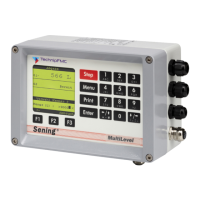
